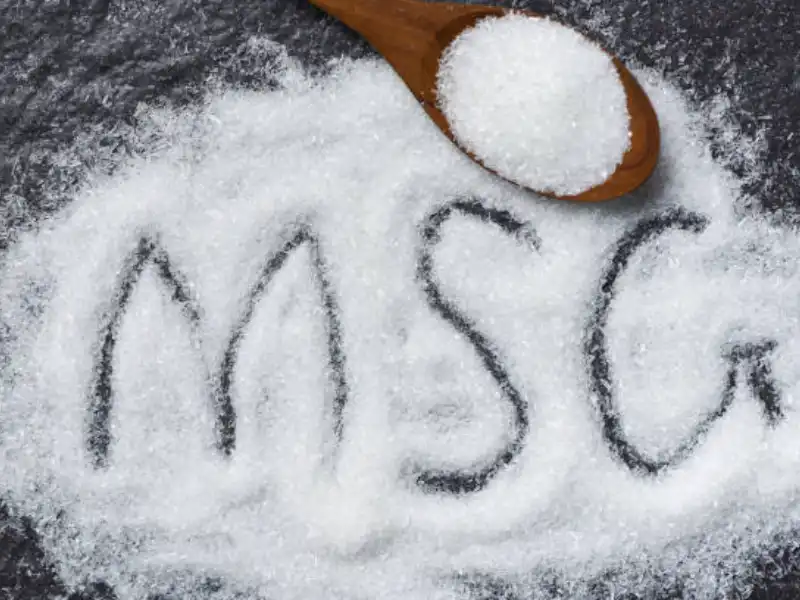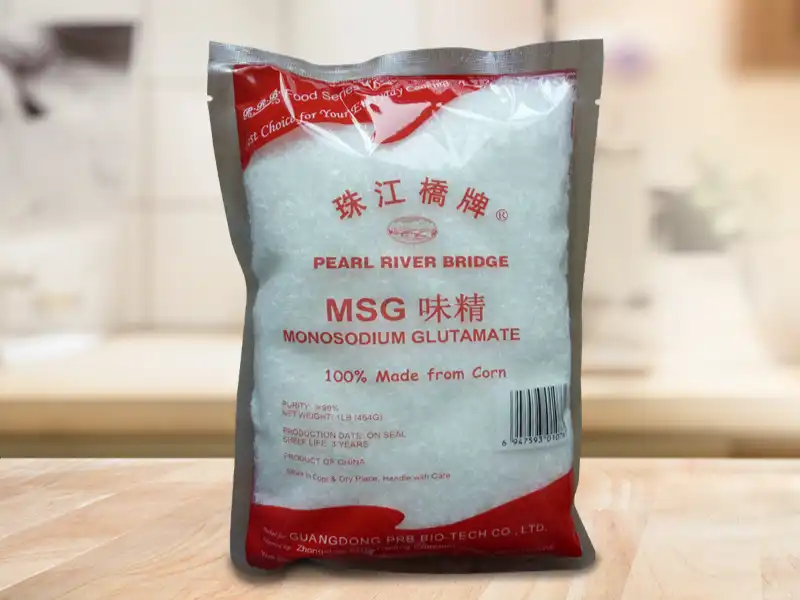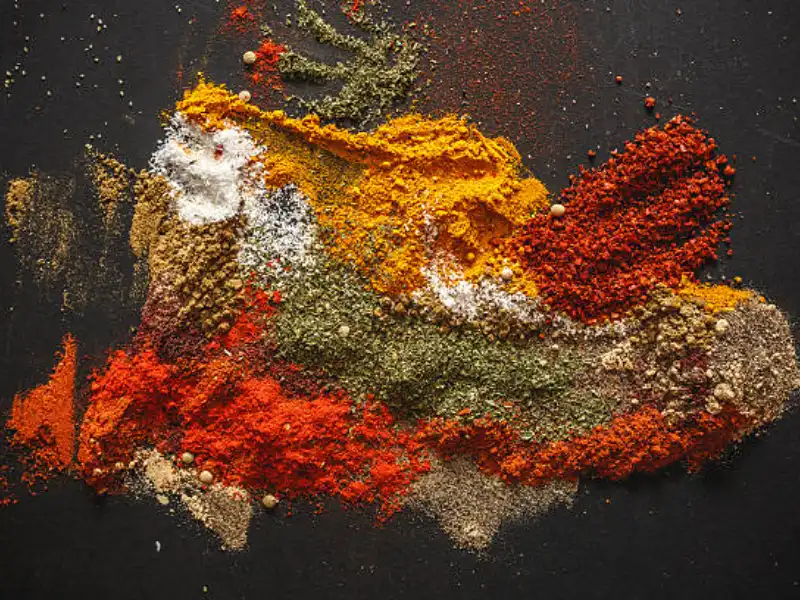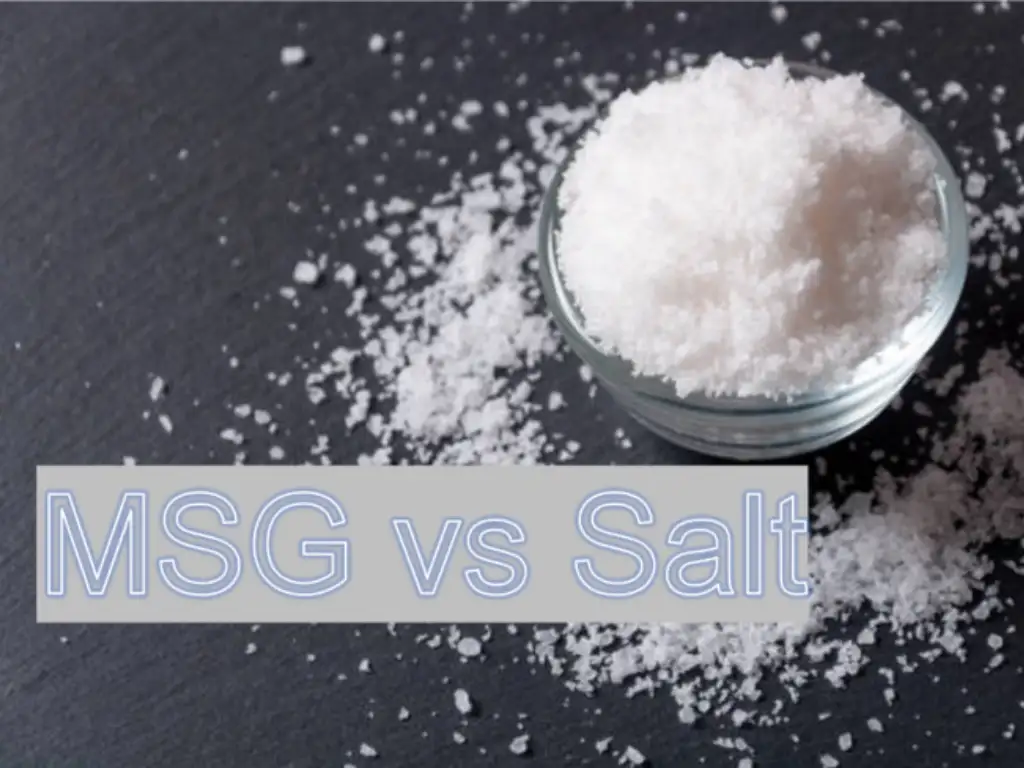- From Field to Flavor: How Are Spices Made - February 18, 2024
- Preserving Flavor: Do Seasonings Expire? - February 18, 2024
- Health Trends Impacting the Spices and Seasonings Market - February 18, 2024


MSG’s distinctive taste, known as umami, the fifth basic taste after sweet, sour, bitter, and salty, lends a savory depth and complexity to dishes. The unique taste of MSG can best be described as a meaty or brothy flavor that leaves your taste buds craving for more. But how does MSG do that? What makes MSG a magical element in the culinary world? Let’s dive into the fascinating world of MSG, debunk some myths, and explore how it continues to shape our food taste and experience.
What is MSG?
MSG, or monosodium glutamate, is a common food additive used to enhance the flavor of foods. The primary component of MSG is glutamic acid, a naturally occurring non-essential amino acid. When MSG is added to food, it balances, blends, and rounds the perception of other tastes, which is why MSG is often used in cooking, much like table salt. But, unlike table salt, MSG also lends a savory taste to foods, known as umami, which translates to “deliciousness” in Japanese. The use of MSG in food has been generally recognized as safe by the Food and Drug Administration (FDA), the same category as spices like pepper and thyme. However, its consumption has been mired in controversy due to a condition called “Chinese restaurant syndrome” or MSG symptom complex, which we will discuss in detail later.
Is There a Difference Between MSG And Other Flavor Enhancers?
Yes, there is a difference between MSG and other flavor enhancers. Let’s delve a little deeper to understand this.
Monosodium glutamate or MSG, as we’ve discussed, is a flavor enhancer that provides a unique savory taste known as umami. It’s derived from the amino acid glutamate, which is a naturally occurring substance in a variety of foods like tomatoes, cheese, and mushrooms. MSG helps bridge and balance flavors, making the overall taste of a dish more rounded and satisfying.
On the other hand, other flavor enhancers come in many forms and serve different purposes. For example:
- Salt: The most common flavor enhancer used worldwide. While it can’t impart umami flavor like MSG, it enhances the natural flavors of food and can suppress bitterness. To understand how MSG differs from common alternatives like salt, read our detailed comparison here.
- Sugar: Just like salt, sugar is used frequently in cooking. It provides sweetness, obviously, but can also balance other flavors and add to the complexity of a dish.
- Acids (like lemon juice or vinegar): These enhance flavors by providing a tangy taste and brightening the overall flavor profile of a dish.
- Spices and Herbs: These add unique flavors and aromatic elements to dishes. Each has a distinct flavor, and when used appropriately, can add depth and complexity to a dish.
One key difference between MSG and these other flavor enhancers is that MSG specifically enhances the umami, or savory, taste of foods, while other enhancers like salt, sugar, acids, and herbs and spices add or highlight different flavors in the food. The use of any of these will depend on the flavor profile you are aiming to achieve in your dish. It’s also worth noting that flavor enhancer effectiveness can be subjective and may depend on individual taste preferences.


Is There Gluten in MSG?
No, MSG does not contain gluten. MSG, or monosodium glutamate, is a flavor enhancer made from fermented sugar cane or beet molasses. It is a pure form of glutamate and does not contain any gluten proteins, making it safe for individuals with gluten sensitivities or celiac disease.
What Does MSG Taste Like: The Science Behind MSG’s Unique Flavor
When it comes to the flavor of MSG, the word “umami” is frequently mentioned. But what is umami? Coined by Japanese scientist Kikunae Ikeda in 1908, umami refers to the meaty, savory taste that makes our mouth water and our stomach growl.
In essence, umami is the taste of glutamate, which is found in foods like meat, cheese, and tomatoes. Glutamate is also the key component of MSG, hence its strong umami flavor. When you ask, “What does MSG taste like?”, it is the umami flavor you’re referring to. Why does MSG taste so good? The secret lies in our taste buds.
MSG imparts an umami flavor to food, creating a pleasant, brothy or meaty taste sensation that lingers on the palate. They have specific receptors for glutamate, the amino acid in MSG, making it a favorite among the taste buds. When MSG is added to food, the glutamate it contains interacts with our taste buds, stimulating the umami receptors and providing a flavor-enhancing boost to the dish.
MSG in Foods: Cultural Influence and Varied Applications
MSG is used in various food categories to amplify their inherent flavors. Here are five significant categories:


Asian Cuisine
MSG is a staple ingredient in Asian cuisine. It is used to enhance the taste of food, whether it’s in soups, stews, sauces, or stir-fries. The savory taste of MSG makes Chinese food, in particular, delectably appetizing.


Many fast-food chains incorporate MSG in their recipes to intensify the flavor of their dishes.


You can find MSG in numerous processed food items, like canned soups and vegetables, processed meats, and snack foods like Doritos and Pringles.


Seasonings and Spices
MSG is often added to table salt and other spice mixes as it enhances their flavor.


Savory Snacks
MSG is prevalent in savory snacks, such as potato chips, for the unique, savory taste it imparts.
Addressing Common MSG Myths and Concerns: Is MSG Bad For Health?
Despite its wide use, MSG has been subject to numerous myths and misconceptions. Some believe that MSG leads to adverse effects like headaches and allergies, terming it as ‘Chinese restaurant syndrome’. However, studies have consistently failed to establish a definitive link between MSG and these alleged symptoms. The FDA has classified MSG as a food ingredient that is “generally recognized as safe”, debunking the common myth about its health risks. It’s crucial to remember that while MSG enhances the flavor of food, like any other ingredient, it should be used in moderation. For further insights into how MSG is used in cooking and its health considerations, see our article on How to Use MSG in Food.
MSG Safety and Health: Exploring the FDA’s Recognition and Regulations
The Food and Drug Administration (FDA) classifies MSG as “generally recognized as safe” (GRAS), indicating it is considered safe for consumption when used appropriately. This ranking places MSG in the same category as other common food ingredients like sugar, vinegar, and spices. Extensive scientific research has been conducted on MSG to understand its potential health impacts and, based on these studies, the FDA has deemed MSG safe for consumption.
Nonetheless, it’s important to note that individual sensitivity to MSG may vary. Some people might experience mild symptoms, collectively referred to as “MSG symptom complex” or “Chinese restaurant syndrome,” although such cases are rare and not scientifically proven to be directly linked to MSG.
MSG Symptom Complex: Recognizing and Addressing Potential Adverse Reactions
MSG symptom complex, previously known as Chinese restaurant syndrome, refers to a collection of mild, transient symptoms some people claim to experience after consuming MSG. These symptoms may include headaches, facial flushing, sweating, palpitations, chest pain, numbness, and nausea. When it comes to disease, it’s kind of big deal. Here’s an article that might alleviate your concerns about MSG.
It’s crucial to emphasize that scientific evidence connecting MSG to these symptoms is inconclusive, and many studies have found no correlation between MSG consumption and symptom manifestation. However, if you are among the few who feel that you might have a sensitivity to MSG, it’s a good idea to reduce or avoid MSG consumption and seek alternatives that yield a similar umami flavor.


Finding MSG in Everyday Products: Identifying Sources and Reading Labels
MSG can be found in various grocery store products, ranging from canned goods to savory snacks. It is crucial to pay attention to food labels to identify and moderate MSG consumption. When reading food labels, you may find MSG listed as monosodium glutamate, MSG, or E621. By examining labels closely, you can make informed choices and adopt a balanced diet that aligns with your dietary preferences and health requirements.
MSG Alternatives: Natural Sources of Umami to Boost Your Dishes
If you’re looking for alternatives to MSG for achieving umami flavor, consider the following natural sources:
| Soy Sauce | Kikkoman – An internationally recognized brand known for its bright, balanced flavor. It’s all-purpose and enhances the umami in a wide range of dishes. |
| Miso Paste | Hikari Miso – A well-respected and widely available brand, Hikari Miso organic miso paste is a robust choice that adds a blast of umami and rich, nuanced flavor. |
| Tomato Paste | Mutti – An Italian brand that offers high-quality tomato paste with a deep, rich flavor that can greatly enrich the taste of your dishes. |
| Parmesan Cheese | Parmigiano Reggiano – The real-deal Italian Parmigiano Reggiano cheese is always a winner when it comes to boosting umami. |
| Seaweed | Emerald Cove – Their organic, toasted Nori sheets are great for traditional sushi but can also be crumbled into dishes for that umami boost. |
| Mushrooms | It’s best to procure fresh Porcini or Shiitake mushrooms from a local farmers market or trusted vegetable vendor for the best flavor. If this isn’t possible, companies like D’Artagnan offer dried versions that can still pack a powerful umami punch. |
When incorporating these alternatives into your dishes, start with a smaller quantity and adjust to taste so as not to overpower the natural flavors of your ingredients.
Conclusion: MSG’s Continuing Influence on Taste and the Culinary Landscape
MSG remains an essential component in enhancing the taste of various cuisines across the globe. It’s unique umami taste, versatility, and ability to augment the deliciousness of dishes make it a popular choice for chefs and home cooks alike. Despite some lingering misconceptions, scientific evidence continues to support the safety of MSG. As awareness and understanding of umami grow, the culinary narrative surrounding MSG is gradually evolving. By finding a balanced approach to its use and mindfully reading food labels, you can enjoy the rich sensory experience that MSG brings to the table without sacrificing your health and well-being.






